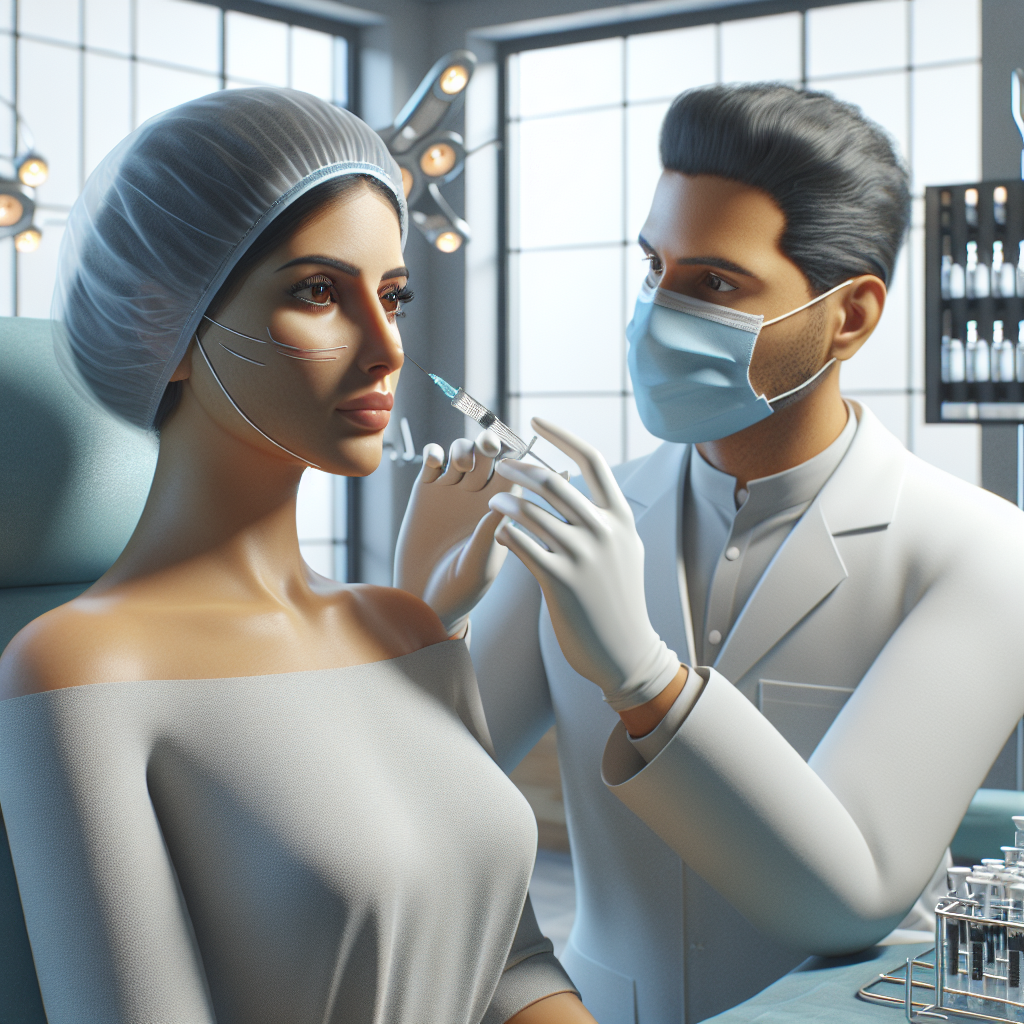Entering the realm of aesthetic treatments begins with a solid foundation in Botox injection training. Botox has become a staple in the cosmetic industry for its ability to diminish fine lines and wrinkles, offering clients a more youthful appearance. To become a proficient Botox injector, one must understand not only the mechanics of the injections but also the artistry and precision required to achieve natural-looking results. Training programs are designed to equip aspiring practitioners with the necessary skills, from patient assessment to the handling of the injectable.
For individuals wondering 'how do I train to give botox injections?', it's essential to seek out accredited courses that provide both theoretical knowledge and hands-on practice. Such programs often cover anatomy, safety protocols, injection techniques, and patient care. Moreover, ethical considerations and business aspects of running a successful practice are typically included in the curriculum. The journey to becoming a skilled Botox injector involves commitment to ongoing education and refinement of technique, as the field of aesthetics is ever-evolving.
Book an appointment or call 647-812-8752 for more info on our Botox injection training courses and take the first step towards enhancing your expertise in the world of aesthetic medicine.
Understanding Botox and Its Applications
Botox, a name derived from botulinum toxin, is a neuromodulator that temporarily relaxes muscles to reduce the appearance of wrinkles and fine lines. It is a minimally invasive procedure that has gained immense popularity for its cosmetic benefits. However, the applications of Botox extend beyond aesthetics. It is also used to treat a variety of medical conditions such as chronic migraines, excessive sweating (hyperhidrosis), muscle disorders, and even certain eye conditions.
The versatility of Botox makes it a valuable skill for medical practitioners. In the realm of cosmetic applications, Botox is used to soften crow's feet, frown lines, and forehead creases. By understanding the underlying muscle movements and facial anatomy, injectors can tailor the treatment to each client's unique features, ensuring results that enhance natural beauty without the appearance of being 'overdone'.
It is also crucial for practitioners to stay informed about the latest research and techniques in Botox applications, as this knowledge directly impacts the safety and satisfaction of their clients. Aspiring Botox injectors must be well-versed in the product's properties, potential side effects, and post-treatment care to provide a comprehensive service that aligns with the highest standards of patient care.
Qualifications Required for Botox Training

To embark on a career as a Botox injector, certain qualifications are essential. Primarily, candidates must have a background in healthcare, such as being a licensed physician, nurse, dentist, or other medical professional. This foundational knowledge is crucial as it ensures an understanding of anatomy, patient assessment, and medical safety protocols.
Specific requirements can vary depending on the region's regulations. In many areas, non-physicians must operate under the supervision of a licensed doctor or within a collaborative practice. It's important to research and adhere to the local laws and regulations regarding who is permitted to administer Botox injections.
Additionally, having a certification in Basic Life Support (BLS) or Advanced Cardiac Life Support (ACLS) is often recommended or required. These certifications prepare practitioners to respond to any adverse reactions or emergencies during the procedure.
Before enrolling in a Botox training program, it is advisable to verify that the course is accredited and recognized by professional bodies. A reputable training program will not only cover the practical skills needed to administer Botox but also emphasize ethical considerations, informed consent, and the importance of a patient-centered approach.
Choosing the Right Botox Training Program

Selecting the ideal Botox training program is a critical step towards becoming a proficient Botox injector. The market offers a variety of courses, ranging from online tutorials to hands-on workshops. However, prospective students should look for programs that offer comprehensive theoretical knowledge as well as practical, hands-on experience.
A high-quality Botox training program should be led by experienced professionals who are not only skilled injectors but also gifted educators. The curriculum must cover anatomy, injection techniques, product knowledge, and patient safety. Moreover, a good program will ensure that students understand the nuances of facial aesthetics, allowing them to deliver results that are both effective and natural-looking.
Prospective students should also consider the program's accreditation status. An accredited course is more likely to be recognized by professional bodies and may be necessary for obtaining insurance. It's also beneficial to choose a program that provides ongoing support and resources, such as refresher courses or access to a community of practice, which can be invaluable for career development.
Lastly, reviews and testimonials from former students can provide insight into the effectiveness of the training and the quality of education provided. Potential injectors should take the time to research and compare different programs, ensuring the one they choose aligns with their career objectives and educational needs.
Gaining Practical Experience in Botox Injections

After completing a Botox training program, gaining hands-on experience is essential to hone the skills required to become an adept Botox injector. Practical experience helps in building confidence, understanding patient interactions, and mastering the precision necessary for administering injections effectively.
One way to gain experience is by working with a mentor. A seasoned practitioner can provide guidance, share insights from their professional journey, and offer feedback on technique. Mentorship can often lead to opportunities to observe procedures and eventually to practice under supervision, which is invaluable for skill development.
Another avenue is to seek employment or an internship at a clinic that specializes in Botox and other cosmetic treatments. This environment not only offers the chance to practice Botox injections but also exposes practitioners to a variety of cases, enhancing their understanding of diverse facial structures and patient expectations.
For those who prefer a more structured approach to gaining practical experience, some training programs include a clinical practicum or offer post-certification workshops where students can practice on live models. Such opportunities are crucial as they bridge the gap between theoretical knowledge and real-world application.
Regardless of the path chosen, consistent practice and a commitment to ongoing learning are key components in becoming proficient in Botox injections. It is also important to stay updated with the latest techniques and industry standards to ensure the highest quality of care for patients.
Legal Considerations and Certification Process

Before embarking on a career as a Botox injector, it is crucial to understand and comply with the legal considerations and certification process specific to your region. The requirements can vary significantly from one location to another, often involving a combination of specialized training, examinations, and licensure.
Prospective injectors must typically complete a certification course that is recognized by local health and medical boards. This ensures that practitioners are knowledgeable about safety protocols, anatomy, product composition, and proper injection techniques. Following certification, practitioners are often required to obtain a license to practice, which may involve additional examinations or proof of continued education.
It's also important to be aware of the legal scope of practice for your professional background, as some regions may restrict the administration of Botox to certain healthcare professionals. Neglecting to adhere to these regulations can result in legal repercussions and endanger patient safety.
To ensure that you are well-informed and prepared for your career in this field, Book an appointment / free consultation or call 647-812-8752 for more info about our training programs and how we can assist you in meeting all the necessary legal requirements to become a certified Botox injector.
Completing the legal considerations and certification process is a significant step towards a successful career in aesthetic medicine. With the proper credentials, you can provide safe and effective treatments, earning the trust and satisfaction of your clients.
